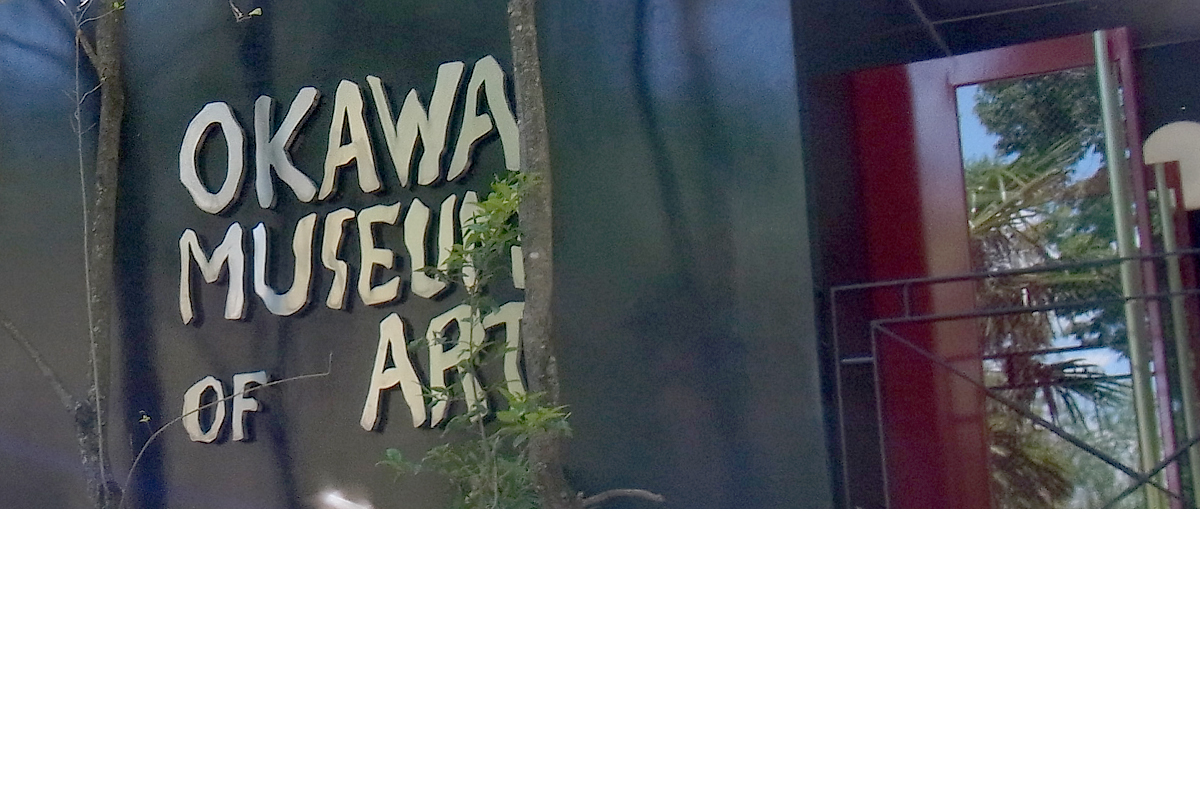お知らせ
ごあいさつ
Welcome
ごあいさつ
公益財団法人大川美術館は、この度、「テキスタイル・プランナー 新井淳一の仕事」展を開催いたします。
新井淳一(1932-2017)は、桐生市内の織物業の家に生まれ、早くから織物の技術を学びました。絹、綿、ウールなどの天然繊維を素材にするばかりでなく、
金銀糸織物の開発にも励み、多くの新しい技術を生み出しました。
新井の「布」は、先端的な繊維技術と職人の知恵や手の技、さらに化学知識との融合によって生み出されます。1970年代から、三宅一生、山本寛斎らファッション・デザイナーとのコラボレーションを実現させ、以後さまざまなプロジェクトとかかわり、テキスタイルのプランニング(織物の企画)、素材メーカーとの
連携、後進の教育等にも熱心にとりくみました。さらに90年代からは北米、ヨーロッパ、中国、韓国、香港、オーストラリア等の各地の美術館やギャラリー等で
個展を開催するなど国際的にも活躍し、その作品はニューヨーク近代美術館やビクトリア&アルバート美術館等、多くの美術館に収蔵されています。
新井淳一は、布を知りつくしたアルチザン(職人)でもあり、同時に自由な発想と豊かな創造力をもつアーティストであり、さらにテキスタイル・プランナーと
称したように、いくつもの工程を必要とする織物制作のために、多くの熟練した職人さんと技術者たちと協働で、そのリーダーとしてつねにまだ見ぬ「布」を求めて制作をつづけていたといえるでしょう。
一方で、当美術館の創設者である大川栄二とも親交が深く、当美術館のよき協力者であり、生前はお互いに刺激しあうことが多かったといわれています。そうした所縁もあり、当美術館では、多摩美術大学名誉教授でテキスタイル研究がご専門のわたなべひろこ様からご寄付をいただき、これをもとに、2017年と翌年の2か年をかけて多彩な創作122件をコレクションすることができました。この度の展覧会は、逝去されて3年にして、「新井淳一の仕事」の全貌を桐生で初めて紹介する機会となります。
最後となりますが、本展覧会開催にあたり、コレクションのためにご尽力いただいたわたなべひろこ様に深甚の感謝の意を表します。また、ご遺族のみなさまには、開催にむけて多大なるご協力を賜りました。さらにご理解とご協力いただいた多くの関係機関、関係者の方々に深くお礼を申し上げます。
2020年8月
大川美術館長
田中 淳
公益財団法人大川美術館は、この度、「テキスタイル・プランナー 新井淳一の仕事」展を開催いたします。
新井淳一(1932-2017)は、桐生市内の織物業の家に生まれ、早くから織物の技術を学びました。絹、綿、ウールなどの天然繊維を素材にするばかりでなく、
金銀糸織物の開発にも励み、多くの新しい技術を生み出しました。
新井の「布」は、先端的な繊維技術と職人の知恵や手の技、さらに化学知識との融合によって生み出されます。1970年代から、三宅一生、山本寛斎らファッション・デザイナーとのコラボレーションを実現させ、以後さまざまなプロジェクトとかかわり、テキスタイルのプランニング(織物の企画)、素材メーカーとの
連携、後進の教育等にも熱心にとりくみました。さらに90年代からは北米、ヨーロッパ、中国、韓国、香港、オーストラリア等の各地の美術館やギャラリー等で
個展を開催するなど国際的にも活躍し、その作品はニューヨーク近代美術館やビクトリア&アルバート美術館等、多くの美術館に収蔵されています。
新井淳一は、布を知りつくしたアルチザン(職人)でもあり、同時に自由な発想と豊かな創造力をもつアーティストであり、さらにテキスタイル・プランナーと
称したように、いくつもの工程を必要とする織物制作のために、多くの熟練した職人さんと技術者たちと協働で、そのリーダーとしてつねにまだ見ぬ「布」を求めて制作をつづけていたといえるでしょう。
一方で、当美術館の創設者である大川栄二とも親交が深く、当美術館のよき協力者であり、生前はお互いに刺激しあうことが多かったといわれています。そうした所縁もあり、当美術館では、多摩美術大学名誉教授でテキスタイル研究がご専門のわたなべひろこ様からご寄付をいただき、これをもとに、2017年と翌年の2か年をかけて多彩な創作122件をコレクションすることができました。この度の展覧会は、逝去されて3年にして、「新井淳一の仕事」の全貌を桐生で初めて紹介する機会となります。
最後となりますが、本展覧会開催にあたり、コレクションのためにご尽力いただいたわたなべひろこ様に深甚の感謝の意を表します。また、ご遺族のみなさまには、開催にむけて多大なるご協力を賜りました。さらにご理解とご協力いただいた多くの関係機関、関係者の方々に深くお礼を申し上げます。
2020年8月
大川美術館長
田中 淳
Welcome
It is a pleasure for Okawa Museum of Art to be holding this exhibition entitled The Work of the Textile Planner Arai Junichi.
Arai Junichi (1932-2017) was born to a family engaged in textile manufacture in Kiryu and learned weaving techniques from early on. Not only did he employ natural materials such as silk, cotton, and wool, but he also strived to develop metallic yarn and devised many new techniques.
Arai’s “nuno (textiles)” were created by uniting state-of-the-art fiber techniques, the artisans’ insight and handwork, and chemical knowledge.
From the 1970s, he realized collaborations with fashion designers such as Miyake Issey, Kawakubo Rei, and Yamamoto Kansai. Thereafter, he was involved in a variety of projects and was engaged intently in textile planning, cooperation with material makers, education of the next generation, etc. From the 1990s, he gained international fame holding solo exhibitions in museums and art galleries in North America, Europe, China, Korea, Hong Kong, Australia, etc. His works can be found in the collections of numerous museums including The Museum of Modern Art in New York and the Victoria and Albert Museum in London.
Arai Junichi was an artisan who knew everything about textiles and, at the same time, an artist full of unfettered ideas and great creativity. Calling himself a textile planner, in order to produce textiles, which have to go through quite a few stages of work, together with skilled artisans and technicians, he continued as their leader in constant pursuit of yet to be seen “nuno (textiles).”
Arai was also good friends with Okawa Eiji, the founder of our museum, and supported the museum, too. They are known to have stimulated each other during their lifetime. It was through such connections that we had the honor of receiving a donation from Ms. Watanabe Hiroko, professor emerita of Tama Art University, who specializes in research on textiles. Based on this donation, over a period of two years, 2017 and 2018, we were able to build a collection of 122 variegated works. Just three years after Arai’s death, the current exhibition is the first opportunity for a full view of “The Work of Arai Junichi” to be introduced in Kiryu.
Last but not least, we would like to express our heartfelt thanks to Ms. Watanabe Hiroko for all her good offices towards the collection and organizing this exhibition. We are also grateful to the surviving family for all their cooperation and to all others concerned for their kind understanding and cooperation.
August 2020
Tanaka Atsushi
Director, Okawa Museum of Art
It is a pleasure for Okawa Museum of Art to be holding this exhibition entitled The Work of the Textile Planner Arai Junichi.
Arai Junichi (1932-2017) was born to a family engaged in textile manufacture in Kiryu and learned weaving techniques from early on. Not only did he employ natural materials such as silk, cotton, and wool, but he also strived to develop metallic yarn and devised many new techniques.
Arai’s “nuno (textiles)” were created by uniting state-of-the-art fiber techniques, the artisans’ insight and handwork, and chemical knowledge.
From the 1970s, he realized collaborations with fashion designers such as Miyake Issey, Kawakubo Rei, and Yamamoto Kansai. Thereafter, he was involved in a variety of projects and was engaged intently in textile planning, cooperation with material makers, education of the next generation, etc. From the 1990s, he gained international fame holding solo exhibitions in museums and art galleries in North America, Europe, China, Korea, Hong Kong, Australia, etc. His works can be found in the collections of numerous museums including The Museum of Modern Art in New York and the Victoria and Albert Museum in London.
Arai Junichi was an artisan who knew everything about textiles and, at the same time, an artist full of unfettered ideas and great creativity. Calling himself a textile planner, in order to produce textiles, which have to go through quite a few stages of work, together with skilled artisans and technicians, he continued as their leader in constant pursuit of yet to be seen “nuno (textiles).”
Arai was also good friends with Okawa Eiji, the founder of our museum, and supported the museum, too. They are known to have stimulated each other during their lifetime. It was through such connections that we had the honor of receiving a donation from Ms. Watanabe Hiroko, professor emerita of Tama Art University, who specializes in research on textiles. Based on this donation, over a period of two years, 2017 and 2018, we were able to build a collection of 122 variegated works. Just three years after Arai’s death, the current exhibition is the first opportunity for a full view of “The Work of Arai Junichi” to be introduced in Kiryu.
Last but not least, we would like to express our heartfelt thanks to Ms. Watanabe Hiroko for all her good offices towards the collection and organizing this exhibition. We are also grateful to the surviving family for all their cooperation and to all others concerned for their kind understanding and cooperation.
August 2020
Tanaka Atsushi
Director, Okawa Museum of Art


